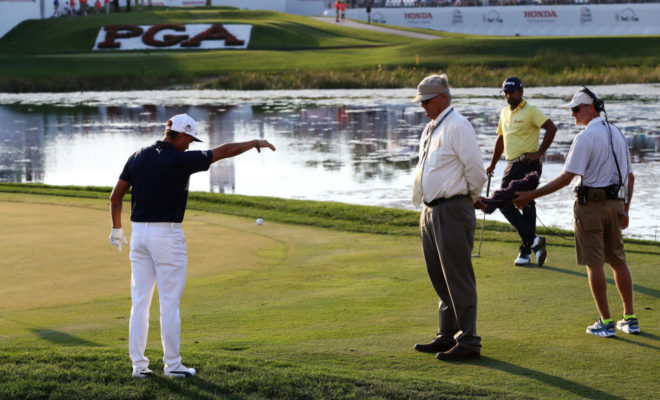Bring Your Smartphone: In the Decisions for 2014, more devices can now be used on the course

You can now use your smartphone as a distance measuring device. As we’ve heard from some of you, that’s the greatest change the Rules of Golf will ever make. Every two years, the Decisions on the Rules of Golf are amended to make our code more applicable to the evolving game and environment in which golf is played. Here’s a look at some of the key changes that are now in effect after the most recent changes:
- Until now, the use of a compass was a breach of the rules. Since most smartphones have compasses installed on them, those devices could not be used as distance measuring devices, regardless of whether or not that compass was ever in use on the course. By permitting the use of a compass, the smartphone is now able to be used as a distance measuring device. Let’s be honest, smartphones are taking over the world — how much longer will we see lasers on the course? The rules also now permit a player to look at weather conditions on an app or a web browser. The idea is that this data is not specific to your exact location, thus it is no longer a breach to obtain it. As long as you’re not carrying a device such as an anemometer (yes, I had to Google that word) capable of measuring conditions where you’re physically located, you’re in the clear.
- Every sport’s governing body has to eventually address the capabilities of technology and television. The NFL, for example, has done an amazing job with instant replay, while MLB, well, they’re working on it. One of golf’s perceived hurdles is the couch referee, whose flat screen TV is so powerful that he has the ability to see (and call in) rules infractions from home. The USGA and R&A released a statement that addresses this topic, and while we shouldn’t necessarily expect to see a change in how they respond to whistle blowers, they did create a new decision (18/4) which covers the situation where a ball at rest is moved by a player, but the movement is only discernable through the use of advanced technology. In other words, if the player is unable to determine that the ball moved with the naked eye, he or she is given the benefit of the doubt and the ball is deemed not to have moved. Mr. Woods would have appreciated this decision a few months back.
- In the coming years, I hope to see more changes that assist with the speed of play, but we got a start in 2014. For years, the rules didn’t allow a player to first go forward to search for his original ball prior to playing a provisional ball. New Decision 27-2a/1.5 allows the player to walk forward up to approximately 50 yards prior to returning to play a provisional ball. This is especially useful in the case of a blind shot or when playing a course that is unfamiliar to you. After walking this short distance forward, if you then become aware that your original ball may be lost or out of bounds, the rules now permit you to return to play a provisional. Why? Because it takes less time to do this than to walk a significant distance forward only to have to return to put another ball into play.
 Perhaps the biggest enhancement we’ll see in the future is the ruling bodies’ attempt to simplify the book. Twenty-four decisions were removed (which makes it thinner) and illustrations were added for clarity, such as in Decision 25-2/0.5, which now better explains what it means for a ball to be considered embedded. If I were a betting man, I’d say expect to see more changes like these in the future, as our code will continue to evolve to meet the demands of tomorrow’s game.
Perhaps the biggest enhancement we’ll see in the future is the ruling bodies’ attempt to simplify the book. Twenty-four decisions were removed (which makes it thinner) and illustrations were added for clarity, such as in Decision 25-2/0.5, which now better explains what it means for a ball to be considered embedded. If I were a betting man, I’d say expect to see more changes like these in the future, as our code will continue to evolve to meet the demands of tomorrow’s game.











